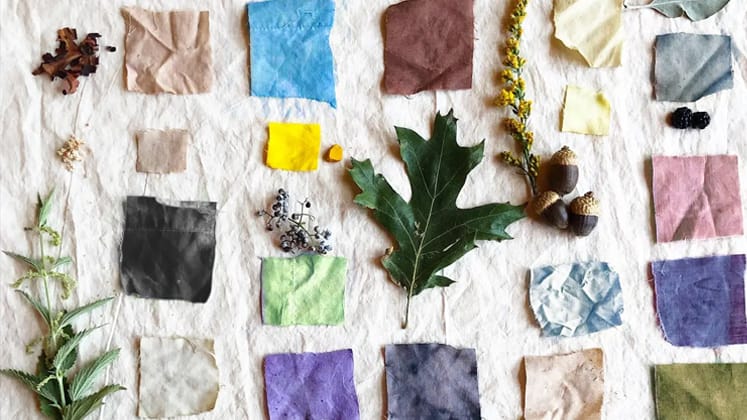Beyond the Bag: Futuristic Materials and Technologies Revolutionizing Packaging Most traditional plastic bags have a large environmental impact in that they pollute the environment and affect wildlife (National Geographic, 2019). However, there is slowly a shift in packaging material and biodegradable polymers, fabrics from plants, and recycled ones are on the forefront. It also shows how these innovations are not only improving usability but also embracing the principles of sustainable development in packaging’s future.
Normal plastic bags, conventional bags commonly used now, have therefore become an environmental nuisance. Facts have it that over several billion plastic bags are manufactured every year and the destination of most of them is the dump site or the sea. This results in long term pollution and as a result affects the life and structure of marine organisms and habitats (National Geographic, 2019). Due to their non-biodegradable material, these bags can take several hundreds of years to break down, hence posing a durable threat to the environment.
Biodegradable Polymers
Biodegradable polymers have entered the sphere of gradual popularity as of the perspective circulating materials instead of the traditional plastics. Incorporating corn starch and sugarcane products, these polymers degrade faster, which minimizes the creation of landfill waste. European Bioplastics (2020) also reveals that the market for biodegradable plastics is still growing due to the growing concern for the environment and the measures being taken. Some biodegradable polymers that are used in packaging are polylactic acid (PLA) and polyhydroxyalkanoates (PHA) used in making bags to food containers. The advantage of enhancing the environmental quality since these materials degrade much faster remains a concern due to the disadvantage of higher costs and the difficulty in increasing production magnitude.
Plant-Based Fabrics
One of the recycled materials is the fabrics from the plants for packaging that can also be used since it is friendly to the environment. Such fabrics as hemp, bamboo, organic cotton, and so on are also the same, which can be regenerated during the growing season and are biodegradable products. The research shows that the advancement of plant-based biodegradable plastics will be rapid and is expected to increase tremendously due to increased consciousness of people toward the use of environmentally friendly products (Research and Markets, 2021). Uses include shopping bag materials and wrapping materials. Provided that these fabrics provide a substantial advantage in the environmental aspect, including a negative carbon footprint or biodegradation, problems that should be noted include high costs or the sustainability of the fabric. A good case is the use of fabrics made from hemp, which several production companies such as Patagonia use today that focus on preserving package and product sustainability.
Recycled Materials
Recycling is one of the sustainability strategies in packaging because it entails the reuse of waste materials for other products. Plastics, paper, metals and others used in packaging come with reused features in their production hence afford the society the right value with regards to the waste to produce ratio. The Guardian (2021) also points out that incorporating recycled materials ensures that it fits into the circular economy system in which products are designed to be used for a long time while their components are designed for recycling. However, the idea may not be implemented due to the following reasons: Even though the authors have encouraged the use of organic food by citing the fact that it has less impact on the environment hence the preservation of resources, the following factors act as hindrances. Such brands as Loop Industries are already leading this cause and recycling the plastic waste and converting it into quality packaging material adopted by the brands.
The future of packaging is actually bright containing aspects such as edible packaging, improved biodegradable composite and smart packaging with shelf-life extension. According to the Ellen MacArthur Foundation (2017), these technologies offer opportunities for the change of the plastics economy. Some of the reasons include heightened consumers’ awareness and call for environmental conservation and governments promulgation of regulations that discourage the use of non-recyclable packaging materials. From the social perspective, such innovations are beneficial in the context of protection and enhancement of sustainability and combating the effects of climate change. Biodegradable polymers, ecological fabrics, and recycled materials are imposing a change to packaging as a result of the problems posed by plastic carrier bags. Such sustainable practices are enticed from the companies and the consumers, so that one day the world will be liberated from the menace of plastic. Thus, the vision of building advanced structures gets closer as technology and materials develop day by day.
Article by – Heshinee Antonia
References:
•European Bioplastics. (2020). Bioplastics market data 2020. Retrieved from https://www.european-bioplastics.org/market/
•National Geographic. (2019). The world’s plastic pollution crisis explained. Retrieved from https://www.nationalgeographic.com/environment/article/plastic-pollution
•Ellen MacArthur Foundation. (2017). The New Plastics Economy: Rethinking the future of plastics & catalysing action. Retrieved from
https://www.ellenmacarthurfoundation.org/publications/the-new-plastics-economyrethinking-the-future-of-plastics-catalysing-action
•Research and Markets. (2021). Plant-based biodegradable plastics market: Global industry trends, share, size, growth, opportunity and forecast 2021-2026. Retrieved from https://www.researchandmarkets.com/reports/plant-based-biodegradable-plastics-market
•United Nations Environment Programme (UNEP). (2018). Single-use plastics: A roadmap for sustainability. Retrieved from https://www.unep.org/resources/report/single-useplastics-roadmap-sustainability
•The Guardian. (2021). Recycled plastic: How manufacturers can tap into the circular economy. Retrieved from https://www.theguardian.com/sustainable-
business/2021/jan/15/recycled-plastic-manufacturers-circular-economy


